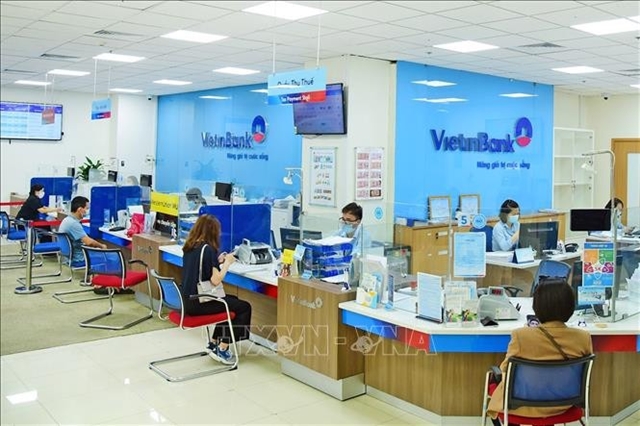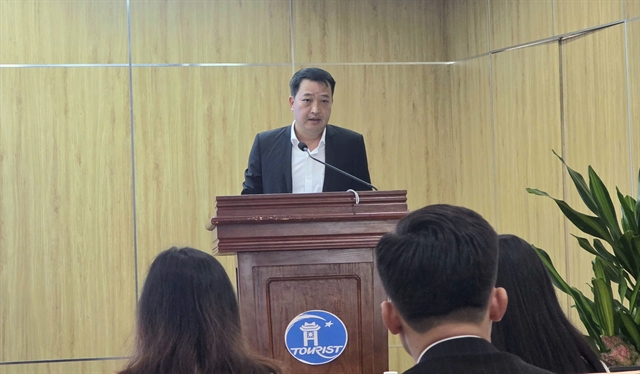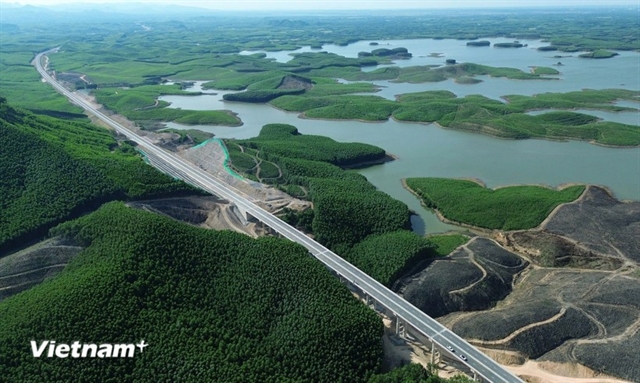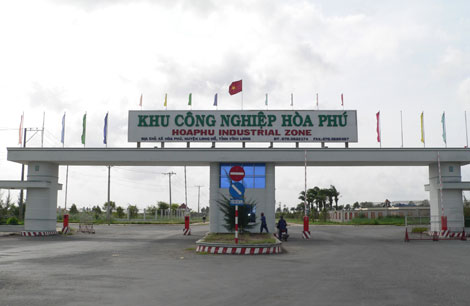

|
| Trần Thanh Hải, deputy director of the Ministry of Industry and Trade’s Import and Export Department |
Việt Nam’s Transport and Logistics Statistical Yearbook 2019 showed the total length of the country's road system is 630,564km but the total length of the highways is less than 2,000km. The lack of infrastructure connecting road to seaports such as domestic container ports or modern logistics centres has made logistic costs in Việt Nam uncompetitive.
Trần Thanh Hải, deputy director of the Ministry of Industry and Trade’s Import and Export Department, shares his views on the development of the logistics sector in Vnews’s Economic Focus programme
How do you evaluate the current state of logistics infrastructure in Việt Nam?
Infrastructure is an integral part of any country's logistics development along with other factors such as business environment, institutions, human resources, technology and training. In Việt Nam, logistics infrastructure, including transport and warehousing infrastructure, has developed very rapidly in recent times.
From a transport infrastructure perspective, the road system including national roads and highways has been upgraded and expanded significantly in the last decade. For sea transport, we have large ports such as Cái Mép-Thị Vải, Cát Lái and Lạch Huyện which have developed into international transit hubs. Regarding aviation, besides existing airports, Việt Nam is building new airports as well as upgrading old ones. Notably, we have started the construction of Long Thành International Airport which is hoped to become a transit hub in the region.
The railway infrastructure is still the least developed, failing in its role as a means of freight transport.
There is other logistics infrastructure like warehouses or logistics centres. In recent years, the number of logistics centres has grown rapidly, especially in industrial zone clusters such as Hải Phòng, Bắc Ninh, Long An, Bình Dương and Đồng Nai. Not only developing in quantity, but the areas, scale, equipment and quality of administration at the logistics centres are all gradually improving. These are positive points in the logistics infrastructure development in Việt Nam.
A lot of investors have gotten involved in building airports, highways and logistics centres. What draws them to this sector?
I think investors have closely watched Việt Nam’s economic development. In the past decade, Việt Nam’s economy has expanded very rapidly with the gross domestic product (GDP) usually growing 6-8 per cent per year. Industrial production and trade activities both at home and abroad have increased considerably. Therefore, the demand for logistics services and logistics infrastructure is growing very fast.
Current infrastructure development does not satisfy the needs of manufacturing and trade development in Việt Nam. Investors have seen that demand and invested, getting ahead of the trend, especially in key areas with large factories and gateway ports.
Việt Nam’s logistics costs are high, harming the price of Vietnamese products. What are the reasons behind this?
The index of logistics cost to GDP depends on different assessments but Việt Nam’s logistics cost is relatively high which reflects the low efficiency of our logistics activities and needs improving.
There are a number of reasons for this situation. The first is the inadequate infrastructure which has not met the needs of the economy and even though we have made investment, it is not synchronous and lacks continuity.
For example, Việt Nam’s transport infrastructure stretches along the north-south axis but we cannot promote the development of cheap modes of transport such as waterways and railways. Road transport is responsible for the majority of freight transport, accounting for 60-70 per cent of total volume on the north-south axis. As the cost of road transport is very high, it increases logistics costs.
Besides, connections between ports and other gateways to different means of transport are not available, except for road transport. We also cannot connect railways to ports. Currently, we are developing barge services and promoting inland waterways to share the burden with road transport.
Another issue is the efficiency and capacity of logistics enterprises. Most logistics firms are small and medium-sized companies so their corporate management, human resources and experience in operating at an international scale are still not good.
How should we reduce logistics costs in Việt Nam?
The logistics sector is growing strongly along with the rapid expansion of the economy and trade activities. Thus, improving capacity and reducing logistics costs must take place in tandem.
First, the Government has made many efforts to tackle difficulties faced by enterprises as well as given clear directions to promote the sector. The development here is not only about transportation or warehousing but also related to the policies of localities or even transit policies. In addition, administrative reforms which enable electronic procedure processing, facilitating goods flows, also contribute to reducing overall costs.
Second, in terms of infrastructure, in addition to investment to expand logistics infrastructure, we must focus on connectivity to improve the efficiency of different modes of transport, improving overall efficiency, output and cutting logistics costs.
Third, for businesses themselves, if we still have only small companies and lack large ones capable of leading and inspiring small businesses, their performance will remain low which leads to high costs.
Fourth is the application of technology. Nowadays, we see technology can solve a lot of things more effectively than people do. In logistics, technology is also deployed very quickly such as vehicle tracking systems, automating some processes in the warehouse or managing infrastructure such as ports.
Last is human resources. People are the decisive factor in all economic activities including logistics. We need to prepare a generation of well-trained, professional and devoted logistics professionals so that our logistics sector develops and can catch up with the world.
The Government has set a target growth for the logistics industry of 15-20 per cent per year. What must be done to achieve this goal?
The Government has an action plan from 2017 and heading to 2025 which outlines plans to improve the competitiveness of logistics enterprises and develop the sector.
In the action plan, many tasks are mentioned such as improving the institutional environment, expanding infrastructure, building capacity for businesses, and the application of technology and training. The implementation of these tasks will be done collectively from central ministries to localities and businesses.
The role of the Government and ministries is to provide leadership and directional programmes for businesses to allocate the right resources to develop. In addition, in some areas with the participation of the Government and local authorities, it will help businesses operate more smoothly. Benefits can be seen in breakthroughs in administrative reform, signing free trade agreements or supporting technology application and training. These are the issues that ministries are focusing on to achieve the 2025 goals. — VNS






















